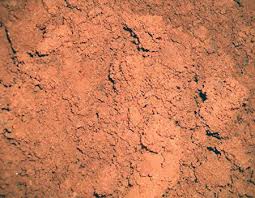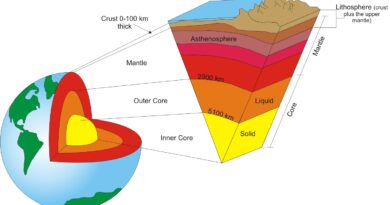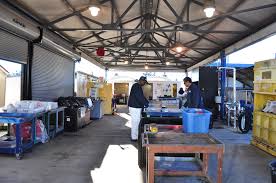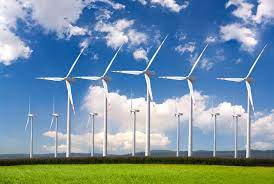The Three (3) Major Soil Types of the World
In this article we will consider soil types of the world under three broad groups. These are azonal soils, intra-zonal soils and zonal soils types of the world.
Main Types of Soils
Three main types of soils have been recognized using the genetic approach. These soils include the azonal, intrazonal and azonal types.
Since climate exerts a lot of influence on weathering, water content and plant cover, the basis of a broad analysis of major zonal soil types is climatological. Naturally, these soils occur most commonly on latitudinal zones.
Zonal soils occur most commonly on gently undulating land where drainage is relatively free and where the parent materials exerts little or no influence on soil formation.
Intra-zonal soil types occur where special conditions of relief or parent material exert a stronger influence on the soil than climate or vegetation. These soil types depend on a specific kind of parent rock; on the presence of much water; or on a coastal habitat.
Azonal soil types are without well-developed characteristics either because they are relatively young or because the parent material and relief conditions have prevented the development of more definite characteristics.
1. Some Types of Zonal Soils
The zonal soil types we will consider here are tundra podsol, chernozem tropical soils.
Tundra soils are found in very cold areas around the polar margin where the subsoil is under permafrost i.e. permanently frozen. The topsoil is frozen in winter but not in summer due to melting. In summer, some vegetation colonises the soil especially lichens, mosses, ferns and worths.
Podsols are found mainly in Eurasia and North America where they develop on glacial drifts where the land surface is covered by coniferous forests. Soil surface horizons contain pine needles and cones and these decompose very slowly because they are resinous. Leaching is severe and the soil is very acidic.
Read ALso : The Four (4) Forms of Complex Processes of Soil Formation
Chernozem soils underlie most of the temperate grasslands of the world in places like central Russia, Ukraine, Romania, Hungary, North American States of North Dakota and Texas, south eastern Australia and Argentina. Cherokee soils are very rich in humus and they occur over a variety of bedrocks. Hence, they are highly climate-dependent. Areas covered by chernozems constitute the great wheat lands of the world.
Tropical Soils are very complex because they comprise a variety of soils known as latosols. They are found within the tropics that experience, in most cases, alternate wet and dry conditions. Furthermore, rocks are known to be deeply weathered giving rise to deep soil.
There are four main types of tropical soils. They are ferralitic and ferruginous soils, ferrisols and vertisols. Ferralitic soils are intensely weathered and leached due to exposure to pedological agencies over a long period of time.
The soils are brilliantly red, porous and friable. They are associated with extremely old surfaces up to the Tertiary Age. Ferruginoussoils are reddish brown and are found mostly in the savanna and areas of monsoon climate.
Although weathering may not be quite deep, grass cover provides some amount of organic matter content with a fairly large amount of humus. This makes it more fertile than the ferralitic soils and the ferrisols.
Ferrisols are also highly leached but weathered to great depths. They are commonly found where the surface is liable to constant erosion while weathering goes on below.
Vertisols are associated with depression with fine clay sediments and organic matter content making the soil relatively fertile. Vertisols could expand and contract because of high content of clay minerals especially the montmorillonite group.
2. Some Types of Intra-zonal Soils
Here, we will consider the saline, peat and calcareous soils. Saline soils are those in which soluble salts are present in large quantity. They are widespread in areas of high evaporation especially in deserts and in the cooler continental interiors.
The strong salt solution rises by capillarity and usually forms a grayish surface crust below which there is a granular salt- impregnated horizon. Typical saline soils are called solonchaks. However, solonetz soils occur when there is a rather higher rainfall that could leach some of the surface salts thereby making the B horizon highly saline.
Peat soils are formed when soils are waterlogged, air is virtually absent, fen organisms are found making bacteriological activity greatly reduced. Instead of the chemical processes of oxidation producing nitrates, carbon dioxide, sulphates and ferric oxides, reduction takes place forming ammonia, sulphates and ferrous oxides.
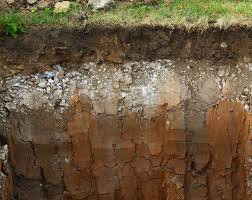
When soil forming processes are allowed to act on an accumulation of peat, either by natural changes such as increasing aridity or by the work of man, notably drainage and deep-ploughing, peat may form a rich organic soil. Examples of peat soils are fen-peat soils, meadow soils, bog-peat soils and dry-peat soils.
3. Some Types of Azonal Soils
The major azonal soils that will be considered include alluvial, marine and volcanic soils.
Alluvial soils are derived from a mixture of sand, silt and clay, consisting of well-mixed rock wastes transported and re-deposited in beds by running water and replenished at times of floods. Alluvial sols are good agricultural soils. Some alluvial plains, especially those of south-eastern Asia, form great areas of intensive cultivation and of dense population.
Marine soils are derived from marine materials built up along low-lying coasts in the form of mud-banks, sand-banks and dunes by natural processes but sometimes stimulated by artificial reclamation.
In countries like Belgium, the Netherlands and Germany dykes are used for draining the low-lying coasts producing various soils developed on marine clays. Such soils are known as polders.
Volcanic soils result from the deposits of lava and ash produced by volcanic activities. These volcanic materials weather easily and are usually transported lower than the slope of volcanoes by rain-wash and torrents.
Around a volcanic site, the new higher lava forms bare grey sheets while the lower weathered materials are immensely fertile and are usually cultivated.
In conclusion, we have briefly looked at the major soil types of the world in this unit. You could have observed that zonal soil types are closely associated with climate.
Hence, they are commonly found latitudinally i.e. whatever their parent materials may be, they are influenced by the prevailing climate within the latitudes they are found.
In the case of intra-zonal soils, climate plays only a little role while special conditions of relief or parent material exert a stronger influence.
Azonal soil types result from quite young parent material and under relief conditions that have not allowed the development of definite characteristics.
By now you should be able to grasp the fact that there are three main soil types all over the world. These are called zonal, intra-zonal and azonal soils.
As earlier stated, zonal soils are influenced a lot by climate notwithstanding their types of parent materials. For instance, in very cold areas, we have tundra soils that are shallow with their subsoil horizons under permafrost. Indeed, tundra soils have frozen topsoils in winter.
Podsols and chernozems are found in temperate regions. While the former occur under forest, the latter are found under temperate grasslands. Lastly, we have our own tropical soils which are very complex. Their various types include the ferralitic and ferruginous soils, ferrisols and vertisols.
For the intra-zonal soils there are saline, peat and calcareous types. Saline soils have plenty of soluble salts present in them and are mostly found in areas of high evaporation.
Read Also : The Four (4) Forms of Complex Processes of Soil Formation
Typical types of saline salts are solonchaks and solonetz. Peat soils include fen-peat, bog-peat, dry- peat and meadow soils. Calcareous soils are mainly rendzina and terra rossa types. They are formed on limestones and chalk as parent materials. While rendzina soils are dark-colorued, terra rossa soils are reddish in colour.
The major types of azonal soils are alluvial, marine and volcanic soils. Both alluvial and volcanic soils could be quite fertile hereby supporting agricultural practices. However, marine soils, found along low-lying coasts, may only be made cultivable through artificial means such as dykes and reclamation.
